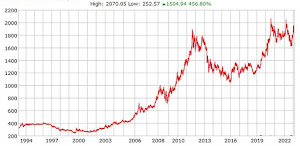**recovering gold from old computer CPUs**, specifically focusing on the method of using **nitric acid
## Gold Recovery from CPUs: Understanding the Role of Nitric Acid
The recovery of precious metals, particularly gold, from discarded electronics (e-waste) is a real process. Computer CPUs are a common source due to the small, valuable amounts of gold found on their pins and internal components.
A common misconception in amateur gold recovery is that a single, readily available acid can dissolve or separate pure gold. The idea that soaking CPU pins in **nitric acid** for a week will cause the gold to "fall off" is a **significant simplification of the chemistry** involved.
The Role of Nitric Acid in Recovery
Nitric acid is a powerful and highly corrosive **oxidizing acid**. Its primary role in electronics refining is **not** to dissolve the gold itself, but to **dissolve the base metals** that the gold is plated onto or alloyed with.
* **Action on Base Metals:** Nitric acid readily dissolves metals like **copper, nickel, silver, and zinc**, which make up the bulk of the CPU pins and the underlying material.
* **Action on Gold:** **Pure gold is highly inert and does not dissolve in nitric acid alone.** When gold-plated material is treated with the acid dissolves the base metals underneath, leaving the gold layer behind. The remaining gold often appears as a thin foil, flakes, or a dark, sludgy powder, which is chemically freed from the base metal, but is **not** in solution. This process is often called **parting** or **stripping** the base metals.
The Necessity of Aqua Regia to Dissolve Gold
To actually dissolve and refine gold into a pure state, a specialized and highly potent chemical mixture is required: **Aqua Regia** (Latin for "royal water").
Aqua Regia is a mix of **nitric acid** and **hydrochloric acid **, typically in a 1:3 volume ratio.
* **Why it Works:** Nitric acid acts as the **oxidizer**, turning elemental gold into gold ions . The hydrochloric acid then provides **chloride ions **, which immediately bond with the gold ions to form the extremely stable, soluble complex ion **tetrachloroaurate **. This complexing action effectively "pulls" the gold out of the metallic state and into solution.
Only once the gold is dissolved in the Aqua Regia solution can it be selectively precipitated back out as highly pure gold metal using a reducing agent (like sodium metabisulfite).
⚠️ Extreme Safety Warning
**Gold recovery involves the use of extremely hazardous and corrosive chemicals.** Any attempt to perform these processes outside of a professional, controlled laboratory setting is highly dangerous and carries significant risks.
1. **Chemical Burns:** Nitric acid and Aqua Regia cause severe, often irreversible chemical burns.
2. **Toxic Fumes:** The reactions produce highly toxic and corrosive fumes, particularly **nitrogen dioxide**, which can cause serious, long-term respiratory damage or death. Proper ventilation (a chemical fume hood) is mandatory.
3. **Explosion Risk:** Certain mixtures and improper handling can lead to explosive reactions.
4. **Environmental Hazard:** Improper disposal of the resulting acid waste containing heavy metal salts is severely damaging to the environment.
***
## Conclusion
While soaking CPU pins in nitric acid is a crucial **preliminary step** to dissolve the non-gold metals, **nitric acid alone will not dissolve pure gold** or cause it to "fall off" as a usable product. The subsequent step—dissolving the gold itself—requires the use of the far more dangerous chemical combination, **Aqua Regia**, a process reserved for professional or highly experienced refiners.









































